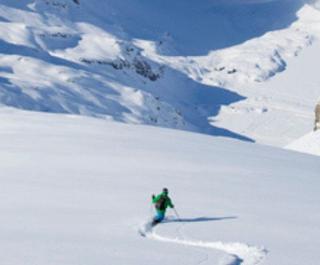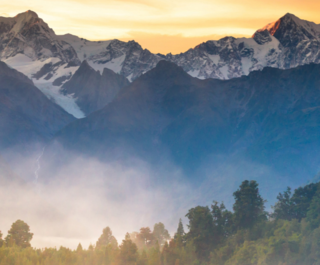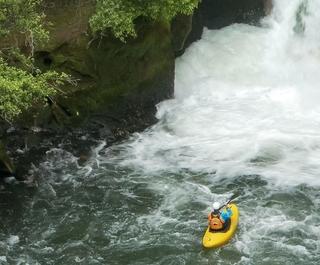
“The sea, once it casts its spell, holds one in its net of wonder forever," said French explorer Jacques Cousteau. This is certainly true for those of us whose bucket list has tripled in size since discovering what the underwater world has to offer.
Take a look beneath the surface with my top seven dive sites around the world.
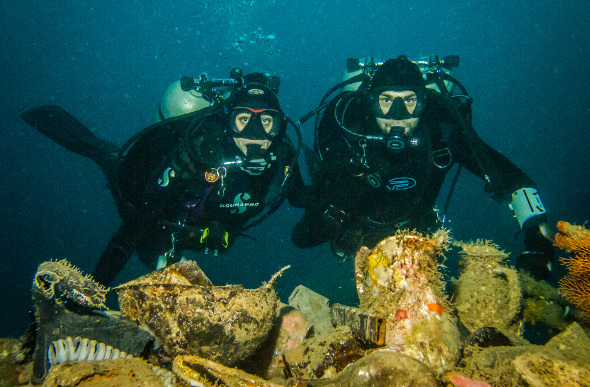 Amelia and Nick diving the SS President Coolidge wreck (image: Rehan Syed Aquamarine Santo)
Amelia and Nick diving the SS President Coolidge wreck (image: Rehan Syed Aquamarine Santo)
SS President Coolidge
Espiritu Santo, Vanuatu
Touted as the largest and most-accessible wreck dive in the world, the SS President Coolidge is difficult to beat. The Coolidge played an important role in the Second World War, before striking two sea mines off Espiritu Santo. Attempts to save the Coolidge were unsuccessful as it sank down into the channel below where it sits today, still with a significant amount of precious cargo on board.
A great dive for history buffs, the artefacts in the ship’s holds are remarkably intact, creating an underwater museum. The best areas to explore include the Promenade Deck, where troops left their helmets, rifles and gas masks; Cargo Holds 1 and 2, where you will find war ambulances and military equipment; and the Medical Supplies area where syringes, test tubes and other paraphernalia are hidden.
Diving through the first-class smoking saloon allows you the opportunity to visit 'The Lady': the iconic ceramic figure of the lady and her unicorn that remained undiscovered for decades. Night dives in the cargo holds immerse you in a spectacular show of flashlight fish, while the wreck's resident moray eel called 'Nessy' is always on the lookout for divers bold enough to give her a chin scratch on their return journey.
Pro Tip: I had a fantastic experience diving with Aquamarine, whose guides are knowledgeable and skilled at guiding you through the maze of passages within the ship.
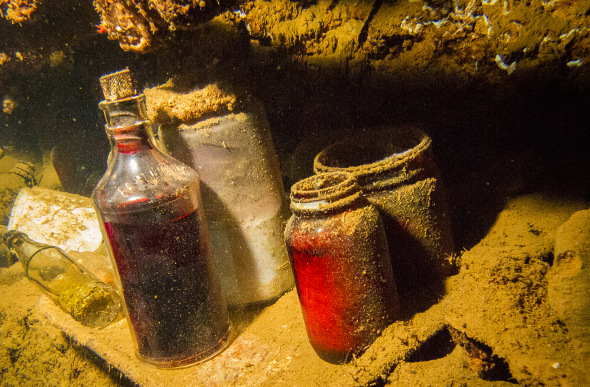 Remnants of medical supplies on the SS President Coolidge (image: Amelia McCarten)
Remnants of medical supplies on the SS President Coolidge (image: Amelia McCarten)
Vatu-I-Ra Passage
Fiji
Three hours from Nadi, on the northern tip of Fiji, lies Raki Raki and the Bligh Waters where you will encounter visually spectacular diving. One of the highlights is a healthy reef system with flourishing arrays of colourful soft and hard corals, as well as the most concentrated population of fish life I have ever seen.
It is difficult to accurately describe the feeling of awe and astonishment felt while diving here. One can’t help feel like they have just discovered the South Pacific’s best-kept secret. Vatu-I-Ra’s underwater topography and tidal flow mean thousands of bright pink and purple soft corals thrive in swift-flowing water.
There is something for all divers, from tiny shrimp to large schools of pelagic fish such as barracuda and trevally, often in such numbers that they resemble a fish tornado. Another beautiful feature is the large communities of brightly coloured Anthias. Thousands of individual creatures move as one over the coral beneath, resembling a fluorescent river.
Pro Tip: My favourite sites include Black Magic Mountain, Mellow Yellow, G6, and Pot Luck.
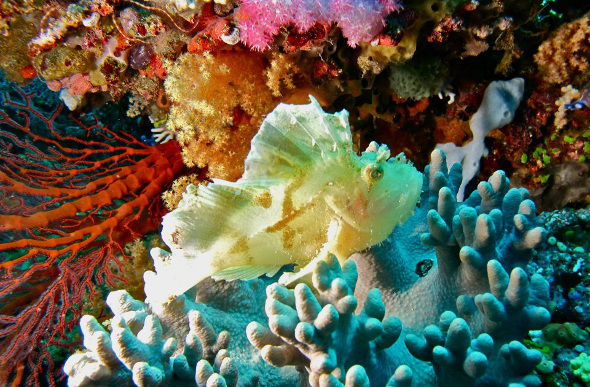 A leaf scorpionfish swimming amongst coral in Fiji (image: Amelia McCarten)
A leaf scorpionfish swimming amongst coral in Fiji (image: Amelia McCarten)
The Cenotes
Riviera Maya, Mexico
A cenote is formed when limestone erodes and creates a natural underground reservoir granting entry to the underground river systems beneath. The three longest cenotes are in the Riviera Maya. Be sure to visit my number-one-rated cenote, 'The Pit'. You descend through a cloud of hydrogen sulphide at around 30 metres, with eerie tree branches protruding from the floor.
Sources of fresh water for the ancient Mayans, many cenotes were viewed as sacred and some, like the Cenote Ponderosa, were used for sacrificial offerings. Underwater archaeologists have recently found human remains within their chambers.
Underwater life here is minimal, but very unique. Fantastic visibility reveals stunning stalagmites and stalactites, along with the fascinating haloclines, a shimmering effect caused by layered densities of fresh and salt water. This can play tricks with your eyes. It often looks like you are approaching the surface when you are just passing through yet another layer of water.
Pro Tip: Cave diving experience is necessary not only for your safety but to preserve the delicate formations that have formed over thousands of years.
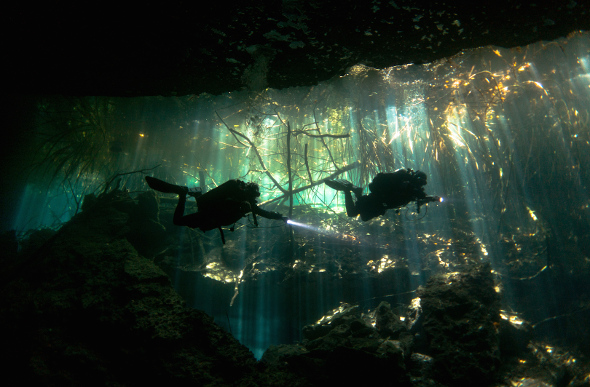 Divers exploring the El Eden cenote in Mexico (image: Katy Fraser for Planet Scuba Mexico, www.planetscubamexico.com)
Divers exploring the El Eden cenote in Mexico (image: Katy Fraser for Planet Scuba Mexico, www.planetscubamexico.com)
Quality diving closer to home. Life Under The Sea: 7 Best Dive Sites In Australia
Interested in diving Fiji? Dive Into Fiji’s Underwater Worlds
The Sardine Run
KwaZulu-Natal, South Africa
From May to July, billions of sardines begin to spawn and move north from the southern waters of South Africa’s Cape Point. This annual migration is something every scuba diver should experience at least once.
In terms of biomass, the Sardine Run rivals the Great Wildebeest Migration of the East African Savannas. The shoals can sit thirty meters deep and are visible by satellite; however, the sardines are not the only reason this dive is so incredible. They create a giant feeding frenzy, attracting the world’s greatest concentration of marine predators.
Dolphins work together, rounding the sardines into giant bait balls that can reach up to 20 meters in diameter, while pushing them towards the surface where gannets plummet from the sky like guided missiles. Seals and sharks, including Great Whites, gather in the hundreds and just when it seems the ocean can’t get any more crowded, giant humpback and minke whales push in to join the feast.
The Sardine Run remains an unexplained phenomenon, but one thing is for certain. Whether it is enjoyed from above or below the water, it is recognised by divers as one of the most spectacular underwater events.
Pro Tip: Good Buoyancy is a must, as you will be diving mid-water.
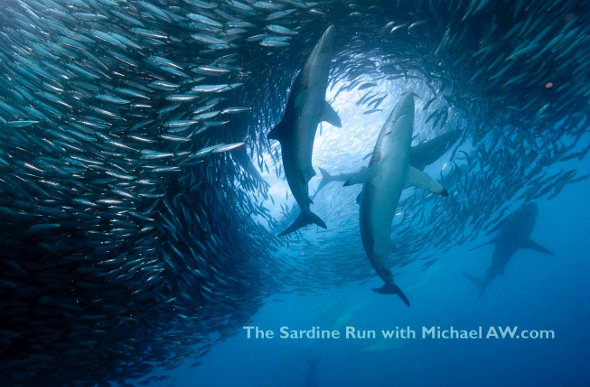 Sharks enjoy their equivalent of a candy shop during the Sardine Run in South Africa (image: Michael Aw)
Sharks enjoy their equivalent of a candy shop during the Sardine Run in South Africa (image: Michael Aw)
Chuuk (Truk) Lagoon
Micronesia
Located north of New Guinea, Truk Lagoon has been declared an underwater museum, home to an entire Japanese fleet frozen in time. Major boasting rights include the wreck of the San Francisco Maru, sunk with three type-95 Japanese tanks on board, and the Fujikawa Maru, whose cargo holds a number of Japanese Zero fighter planes.
In the Second World War, Truk Lagoon was a base for Japanese operations. In 1944, the American-led 'Operation Hailstone' turned Truk Lagoon into the biggest ship graveyard in the world with 12 warships and 32 merchant ships sunk, and 275 aircraft destroyed during the attack.
Diving the mysterious 'Ghost Fleet' of Truk lagoon is one of the most enjoyable, yet eerie wreck dives in the world. More than 3000 people are estimated to have died here and some believe the wrecks are haunted. With no shortage of reef and shark action, it is the slightly unsettling, yet enchanting feeling of being immersed in this slice of history that makes diving at Truk Lagoon so special.
Pro Tip: Keep an eye out for artefacts including mines, torpedoes, motorcycles and even human remains.
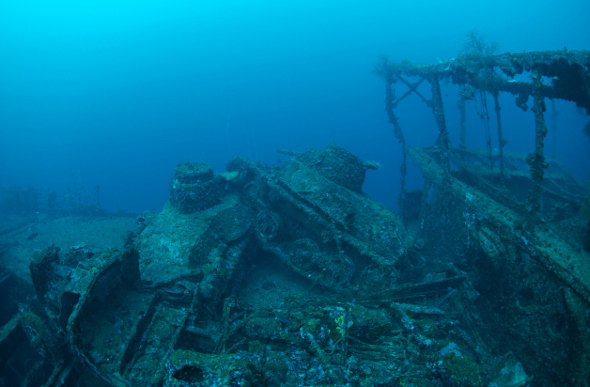 Sunken Japanese tanks at the bottom of Truk Lagoon (image: Getty)
Sunken Japanese tanks at the bottom of Truk Lagoon (image: Getty)
The Galapagos Islands
Ecuador
Heritage-listed since 1978, the Galapagos Islands need no introduction as the epicentre of evolutionary magnificence. The islands can be visited year-round and are unique to anything else in the world. You can see a staggering array of marine life, of which approximately twenty per cent can't be found anywhere else on earth. My personal favourite is the Galapagos marine iguana, the only lizard to swim in the ocean.
The Galapagos Islands are in the middle of three major oceanic currents, which increases the range of marine life. Book a live-aboard dive boat to visit Darwin and Wolf islands, which offer the best chance to see the world's largest fish: the whale shark. You can also see hundreds of schooling hammerheads.
Marine life here has a reputation of being very friendly and curious, none more so than the sea lions who won’t hesitate to come in close to say hello. Keep an eye out for the bizarre Galapagos batfish who uses its highly-adapted pectoral fins to walk along the ocean floor.
Pro Tip: Many dive sites throughout the Galapagos experience cold water conditions, so thicker wetsuits are needed. The temperature and strong currents and surges make conditions challenging, better tackled by experienced divers.
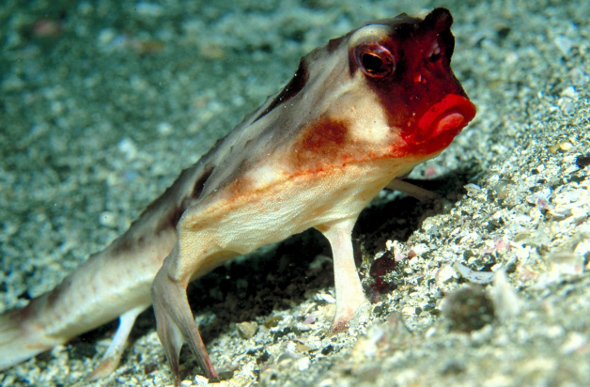 The unusual Galapagos batfish (image: Getty)
The unusual Galapagos batfish (image: Getty)
Manta Village Manta Ray Night Dive
Kona, Hawaii
Just after sundown, a short distance off the Kona Coast in Hawaii, spotlights are erected to illuminate the tiny plankton in the water. These happen to be the preferred meal for one of the largest, most mysterious and acrobatic fish in the ocean: the manta ray.
The definition of majestic, the manta ray has a wingspan of up to six metres and can weigh over 1000 kilograms. With the largest brain to body weight ratio of any living fish, they are also suspected of being incredibly intelligent.
With more than 200 resident manta rays at this site, each with its own distinct black and white markings, this truly is an up close and personal experience that feels otherworldly. Vinnie, Blaine and Sugar Ray are three of the many rays you might encounter barrel rolling within centimetres of your face.
Although stingless and harmless, please refrain from touching. As tempting as it might be, the manta rays can lose their protective mucus membrane if touched by humans.
Pro Tip: You will need to be certified to do the night dive; however, snorkelling options are also available.
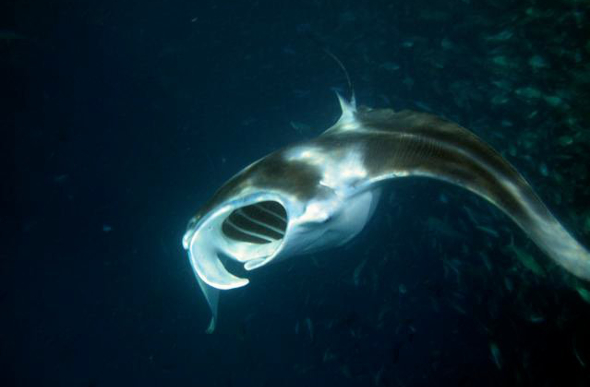 One manta ray enjoys the spotlight during a night dive in Hawaii (image: Kristopher Lim)
One manta ray enjoys the spotlight during a night dive in Hawaii (image: Kristopher Lim)
.........................................................................................................................................................
Visit your local Flight Centre store or call 131 600 for more travel advice and the latest travel deals.
.........................................................................................................................................................


